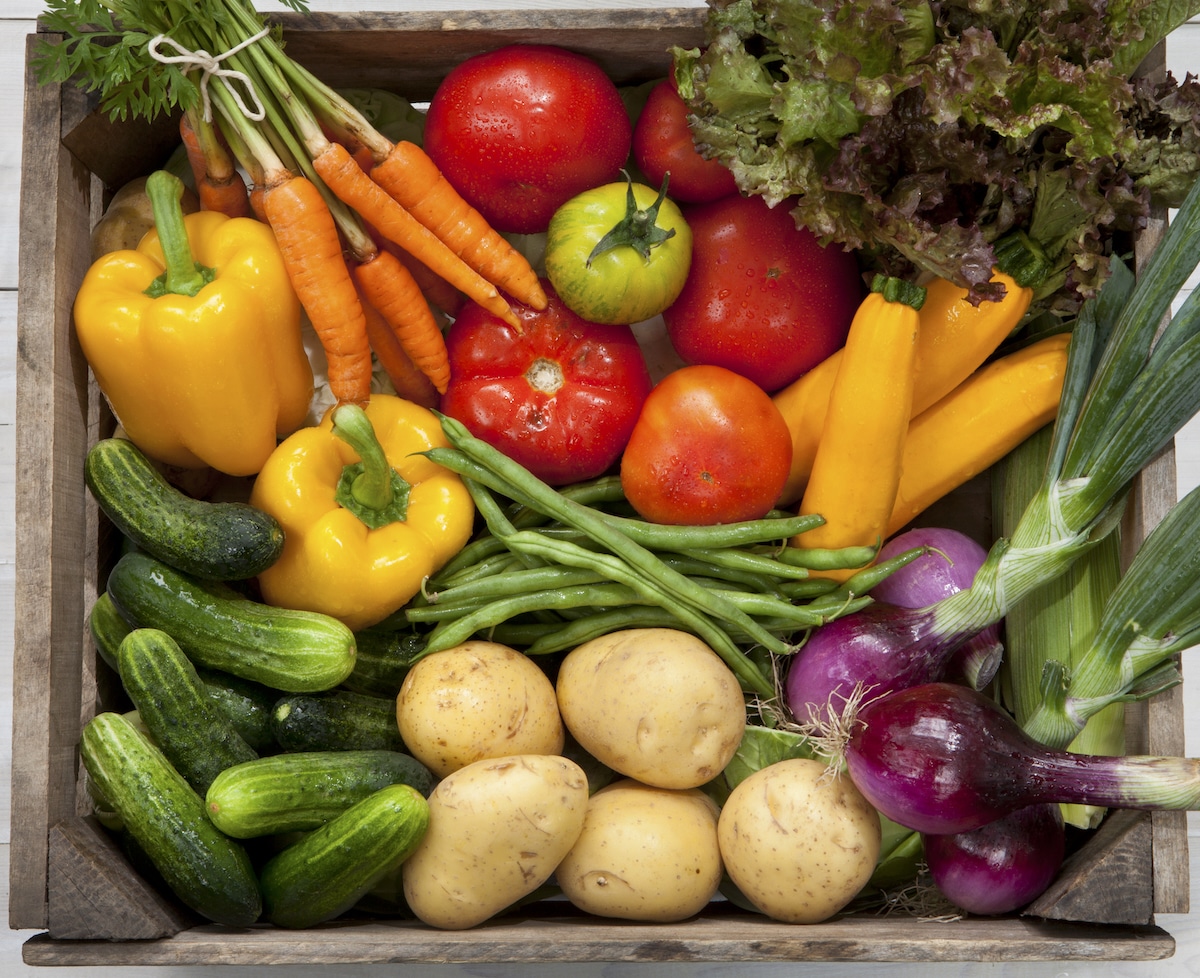Ecowatch
20% of Common Produce Contains ‘Risky Pesticide Levels’: Consumer Reports Study

Common produce that tested high in pesticides levels includes green beans, bell peppers and potatoes. JMichl / iStock / Getty Images Plus

Why you can trust us
Founded in 2005 as an Ohio-based environmental newspaper, EcoWatch is a digital platform dedicated to publishing quality, science-based content on environmental issues, causes, and solutions.
A new report from Consumer Reports has found pesticide residue at levels that posed significant risks on about 20% of the foods analyzed. Among the foods with the highest risks are popular produce like strawberries, green beans and potatoes.
Consumer Reports evaluated 59 common produce items using seven years’ worth of data from the U.S. Department of Agriculture’s Pesticide Data Program (PDP) to compile the nonprofit organization’s most comprehensive study on pesticides in food.
Of the nearly 30,000 samples from 59 types of fruits and vegetables analyzed, about 20% were found to have significant risks from pesticides. Green beans, one of the produce types identified with the most significant risks, even had residues from a pesticide, acephate, and one of its breakdown products, methamidophos, both of which have been banned from use on vegetables for at least 10 years, Consumer Reports noted.
“When you grab a handful of green beans at the supermarket or pick out a watermelon, your chance of getting one with risky pesticide levels may be relatively low,” James Rogers, food safety expert at Consumer Reports, said in a statement. “But if you do, you could get a much higher dose than you should, and if you eat the food often, the chances increase.”
Risks from pesticides weren’t just found in fresh produce — the analysis revealed risks for frozen, canned and even organic produce, The Guardian reported.
Bell peppers, blueberries, potatoes, strawberries, collard greens, celery and green beans were all found with very high risks from pesticides, although risk level varied by fresh or frozen produce, conventional or organic, and whether the produce was grown in the U.S. or imported. For instance, U.S.-grown conventional celery and collard greens revealed moderate risks, but imported varieties came with very high risks; organic versions of these two vegetables posed very low risks.
Many of these findings align with the popular Dirty Dozen list for 2024 by Environmental Working Group, which has named produce such as strawberries, collard greens and green beans as the produce with the most pesticide contamination.
Other produce, including apples, peaches, grapes, spinach and tomatoes, revealed a moderate risk in the Consumer Reports study; apples, grapes, spinach and peaches are all named in the Dirty Dozen 2024 list.
So what do the risk levels mean? Consumer Reports based risk levels on chronic toxicity of pesticides as well as the amount of produce a 35-pound child could safely consume per day. According to Consumer Reports, most people should limit consumption of foods ranked with very high risks, and children and pregnant people should eat less than half of a serving a day of the very high risk foods. Further, the organization recommended that children and pregnant people consume less than one serving per day for high-risk produce.
“When possible, replace a food rated high or very high with a lower-risk one, or choose organic. Keep in mind that the risk comes from repeated servings over time,” wrote Catherine Roberts, associate editor of health at Consumer Reports. “If you usually choose produce with the best ratings, you can reduce the chance of future harm.”
The report also noted that while about 20% of the foods analyzed posed risks from pesticides, most of the popular produce we consume had low risks, especially for organic varieties. These lower-risk foods can be consumed at three or more servings per day safely, according to the report.
Further, the analysis reveals that many of the higher risks come from only a small group of pesticides, which could help inform government policy on pesticide regulations in the future.
Subscribe to get exclusive updates in our daily newsletter!
By signing up, you agree to the Terms of Use and Privacy Policy & to receive electronic communications from EcoWatch Media Group, which may include marketing promotions, advertisements and sponsored content.
Source
Disclaimer: No copyright infringement intended. All rights and credits reserved to respective owner(s).












